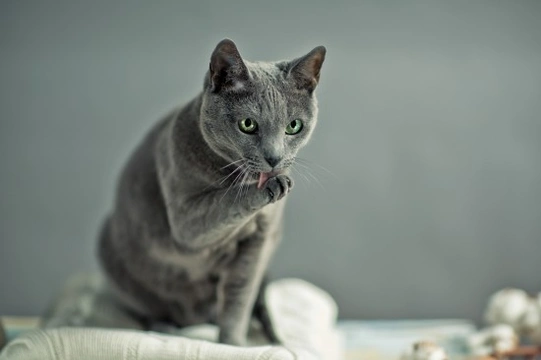
Aortic Thromboembolism in Cats
Aortic thromboembolism or ATE is a relatively common complication of heart disease in the cat. It is extremely painful, and occurs when a blood clot forms in the heart, and then passes along the aorta and lodges there, blocking the flow of blood to either one or both of the cat’s hind legs. This causes paralysis of the leg or legs in question, and the tissue of the legs begins to die off, causing severe pain. The clot can also form further up, leading to a blockage of the blood vessels that supply the bowel and kidneys.
If you know that your cat suffers from a heart condition, it is important to be aware of the signs of aortic thromboembolism, and act quickly if you suspect that your cat is affected.
What causes aortic thromboembolism in cats?
Aortic thromboembolism most commonly occurs as the result of an existing heart condition or heart disease, and there are three factors that need to be present for an aortic thromboembolism to develop. These are:
- Damage to the endothelium, or lining of the heart
- Heightened clotting factors in the blood
- Pooling of blood within the heart, causing the increased likelihood of clotting
The condition can also potentially be caused in rare cases by other conditions such as kidney disease, bacterial endocarditis, Cushing’s disease, and liver disease.
What are the indications of an aortic thromboembolism in the cat?
The most obvious indication of the condition is a sudden-onset loss of use of the hind limbs, such as limb weakness or total paralysis. The cat will also be in serious pain, and this is often obvious too. Laboured breathing may accompany the condition, due to the added stress placed on the lungs and heart.
These signs of aortic thromboembolism are often confused with the symptoms of a road accident or other serious injury, and so prompt veterinary treatment and a firm diagnosis is essential.
How aortic thromboembolism is diagnosed
When your vet examines your cat, they will take into account the cat’s veterinary history, and whether or not they have a known heart condition. Physical symptoms of the condition can include:
- Absent or very weak femoral pulse
- Paralysis or weakness in the hind legs
- Pale paw-pads in light skinned cats
- Hind legs cold to the touch
- Stiffened limbs
- Abdominal pain
- Heart murmur
- Loss of bladder or bowel control
Your vet may also run an echocardiogram with an ultrasound scanner, and potentially take blood for panel testing.
Treatment for aortic thromboembolism
Treatment for aortic thromboembolism is sadly not possible in all cases, and sometimes, euthanasia is the only appropriate option due to the prognosis for recovery.
Even in cases of successful treatment, it is entirely possible that the condition will later recur. Whether or not treatment is viable will depend on a range of factors, such as the degree of pain and paralysis, and the over all health of the heart.
If treatment is indicated, the cat will be given strong painkillers and stabilised prior to removal of the thrombus (blood clot). Removal is usually done surgically, but may involve the administration of strong medications to break down the clot.
The ideal course of action to follow is to support the cat while their bodies break down the clot on its own, using an anticoagulant drug such as heparin, and possibly, drugs that will encourage the blood vessels to dilate and improve circulation. Recovery is slow, and by no means guaranteed, and a significant amount of aftercare at home is required, even in the case of successful treatment.
Even if treatment does go ahead, there is no guarantee that it will succeed, and if the rear limbs develop gangrene or other complications, recovery is highly unlikely.
Can the condition be prevented?
It is extremely difficult to prevent or reduce the chances of an aortic thromboembolism developing in cats with heart problems, and even pro-active treatment methods such as heparin therapy are not always effective. However, cats are often placed on heparin therapy after a first clot, to try to prevent a later recurrence. Waarfarin therapy, something that is usually only used in people with heart problems is a new treatment method that is proving effective in some cases, but is not without its own inherent risks, and requires careful monitoring.
If your cat is known to have any type of heart problem such as a murmur, progressive degeneration or any other weakness, it is important to talk to your vet about the best ways to maintain your cat’s quality of life and do what you can to prevent later problems.
Regular checkups and monitoring of the condition and its progression is essential, as is being aware of your cat’s day to day health and condition, and acting quickly in the event of any changes.



